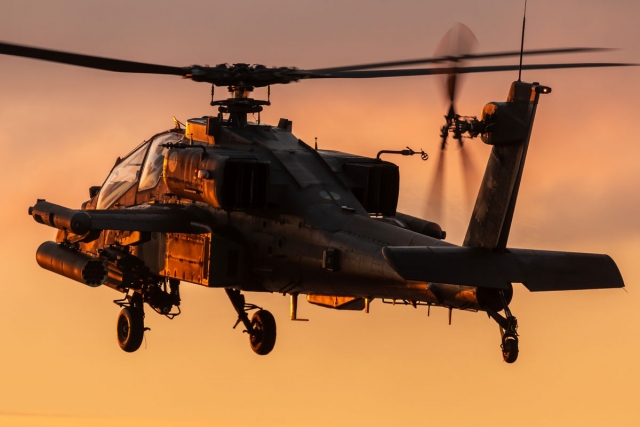Defence Review the Netherlands (long read !)
In September 2020, the Ministry of Defence of the Netherlands revealed a 155 page project review. Scramble Magazine highlights the most important projects concerning the Koninklijke Luchtmacht (KLu, Royal Netherlands Air Force) for you.
Cougar
After the purchase of the AS532 Cougar in 1996, no large investments were made in this helicopter. A number of essential parts of helicopter are now becoming obsolete and it is increasingly difficult to obtain or repair these. This obsolescence leads to reduced employability and increasing operating costs of the Cougar. To mitigate this, parts must be replaced with a focus to cockpit-specific engine instruments, standby instruments and communication and navigation equipment.
This will guarantee the AS532U2 fleet, assigned to 300sq at Gilze-Rijen air base, can fly until at least the end of its useful life in 2030. The MoD plans to modifications during the 2020-2023 timeframe.
Apache
The deployment of the AH-64D is gradually complicated by technical and operational factors. This leads to operational limitations in high-threat conditions. The limitations will increase due to rapid technology developments. The US Army, the main and largest user of the Apache, is modernizing its Apache fleet from AH-64D to the AH-64E standard. The US Army is also discontinuing the support the AH-64D, thus reducing the maintenance costs of the obsolete AH-64D will rise sharply. The US Army offered a remanufacture programme to modernise the Delta's to the Echo variant. The Dutch MoD is currently in the process of this remanufacture programme in which the existing fleet AH-64Ds will be rebuilt, overhauled and fitted with new hulls, transmissions and rotor blades. There is also a need for more engine power and new and modern mission equipment. During the execution of the remanufacturing programme, the availability of the AH-64D of 301sq "Redskins" will temporary decrease. From 2025 onwards, it is planned that the Redskins are fully operational again.
The MoD reports that the AH-64D block II upgrade is running and executed to keep necessary operational and logistical connection with Apache ally operators like the USA. The block II upgrade leads to an improvement of the situational awareness of the Apache crew, it also provides a quick picture of the tactical situation and in addition, the block II upgrade operates in a Network Enabled Capabilities (NEC) environment. Part of this AH-64D Block II upgrade also involves the removal of obsolescence, purchase of sufficient Test & Support Equipment and spare parts.
As soon as the American government is allowed to travel internationally again, the Block II upgrade will be carried out at Gilze-Rijen Air Base as well as in Fort Hood (TX) on the Dutch Apache helicopters. Another planned modification is no longer carried out on the AH-64D, but this one is functional shifted to Project Remanufacture, and becoming a part of the AH-64E modification. An upgrade of the AH-64D simulator (to AH-64E) at home base Gilze-Rijen is planned for the end of 2020. The simulator will also be upgraded with the latest cockpit software (Manned-Unmanned Teaming system), like-wise the Block-II modification.
The MoD further identified that the Apache weapons package (acquired in 1996) does not optimally match asymmetric warfare operations such as those carried out in Iraq and Afghanistan. The package does not meet today's requirements like precision and proportionality. Parts of the acquired ammunition package also reached its end of its technical life, so a revision of the ammunition package is necessary. New Hellfire missiles (including training resources) and parts are needed for the existing 70mm laser guided missiles. This project must be finished by Q3-2022.
The Apache fleet also gets a modern integrated self-protection system that protects the AH-64 against modern types of air-defense systems. This modification, that incorporates Radar Warning Receivers (RWR), Laser Warning Receivers (LWR) and software updates, will be handled by the Logistiek Centrum Woensdrecht (the Netherlands) in combination during a regular maintenance job. Work must be finished by 2025. A Common Missile Warning System (CMWS) upgrade will be part of the AH-64E modification.
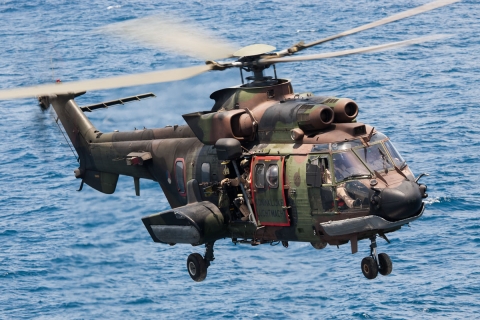

Photos: Stephan de Bruijn and Michiel van Herten (all via Scramble Magazine)
Chinook
298sq is equipped with eleven obsolete CH-47Ds and six more recently acquired CH-47F (NL) Chinooks. In the Defence budget for 2015, the Dutch government decided to invest in improving the employability and sustainability of the armed forces, including the extension of the KLu Chinook capacity with three helicopters, making it a fleet of twenty Chinooks. The project “Chinook Replacement & Modernisation” involves the acquisition of fourteen new CH-47F MYII CAAS Chinooks for the replacement of the eleven older CH-47Ds. The expansion of the fleet, as well as the standardisation of the Chinook fleet through the modernisation of the current six CH-47F (NL) - completed by late 2021 - makes it that the squadron can operate the transport helicopter until 2045.
The Chinook “Replacement and Modernisation” project will lead to a reduced employability of the Chinook throughout the transition period. The new Chinooks are now regularly delivered since the end of March 2020. Eventually, five CH-47F MYIIs will be used for conversion training at Fort Hood (TX) and fifteen will be based at Gilze-Rijen. Depending on the COVID-19 restrictions first new deliveries to the Netherlands are expected late 2020 / early 2021.
Fighting Falcon
The current air-to-air missiles of the F-16s are operational obsolete and at the end of their technical life time. The AIM-9X missile should therefore be replaced by improved IR-guided air-to-air missiles. The new missiles need software and hardware so they can be integrated on both the F-16 and F-35A. Due to all-round deployability of the AIM-9X on the F-16 and the F-35, the software of the missile needs temporarily modification. Currently, the certification process for these modifications is ongoing and is expected to be ready in Q4-2020. The AIM-9X final software will be released and implemented in late 2021. Although the F-16 fleet will be phased out, modernisation of the self-protection of the fleet is still necessary. The ALQ-jamming pods need modification and the F-16 cockpit must be improved through the installation of the Advanced Threat Display (ATD).
As a result of the measures taken in 2011, the F-35A was not operationally introduced in 2016, but from 2019. This resulted in a longer than anticipated use of the F-16 fleet. To keep the airframe technically up and running until the phase-out, investments are necessary like major maintenance of the engines, integration of an Electronic Warfare Management System, the purchase of extra spare parts, gun barrels, air conditioning systems, generators, replacement of the VHF radios and certain measuring/testing equipment and replacement/overhaul of certain ground equipment. In the meantime, additional anti-corrosion measures on the fuselage and wings have been completed. Currently, nine of the fourteen sub-projects have been completed, such as the anti-corrosion measures and overhaul of hydraulic test benches and a renewal of the F-16 Common Colour Multi-Function Displays. All sub-projects are running on schedule and will be finished in 2022.
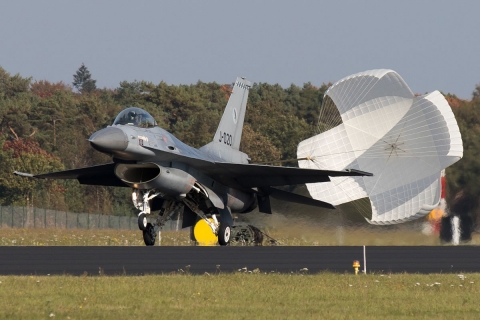

Photos: Johan Havelaar and Maurizio Riva (all via Scramble Magazine)
Lightning II
A project is running concerning the need for an air-to-air medium to long range missile for the F-35A so the type will be capable in obtaining and maintaining air superiority and self-defence. This makes it a precondition for its successful execution of operational tasks. It is not possible to integrate the current inventory of AIM-120 Advanced Medium Range Air to Air Missiles (AMRAAM), used by the F-16AM, nor with software not with hardware. The dimensions of the AIM-120 are too large to fit in the weapons bay of the F-35, so there is a need for a medium to long range air to air missile. First deliveries are expected in Q3-2021.
The on-board gun ammunition, self-protection equipment and weapon-loaders used for the F-16 are not suitable for F-35A operations. The gun of the F-35A has a different calibre (25mm) than that of the F-16 (30mm). The first 25mm ammo deliveries are expected late 2020, early 2021. The operational test phase of the F-35A for the KLu already started in 2015. In view of this testing phase, a small part of the ammunition and, self-protection equipment (decoys, flares) was purchased. The remainder of the requirement is acquired from 2019 onwards.
Reaper
The Medium Altitude Long Endurance (MALE) Unmanned Aerial System (UAS) project involves the acquisition and introduction of four MQ-9s with sensors and ground control stations. This project is part of a US military Foreign Military Sales programme. Expected first deliveries are now planned in Q4-2021 to 306sq at Leeuwarden air base.
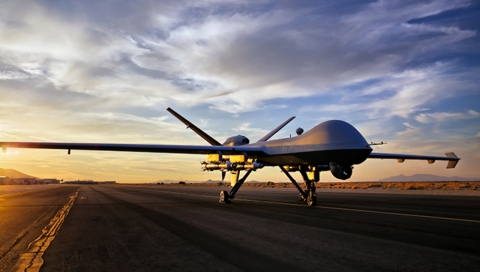
Photo: General Atomics
NH90
The main object of the Dutch MoD is improving the operational deployability of the armed forces. In connection with the phase-out of the Lynx and AB412 helicopters, the MoD started to participate in the NH90 helicopter project, an international programme with Belgium, Germany, France and Italy (the NATO Helicopter Management Organisation -NAHEMO- Nations). Initially, the KLu's need was stated for twenty NATO Frigate Helicopters (NFHs), but following the study "Integrale Helikopter Capaciteit” (Integral Helicopter Capacity) the qualitative need was changed to twelve NFHs for various maritime tasks and eight helicopters in a transport configuration (TNFH), which have been adapted for tactical transport duties from land and from ships. Eventually, twenty NFHs were purchased with the right mission equipment to support the maritime as well as the transport role. Sadly, one NH90 crashed on 19 July 2020, killing two aircrew. Following an investigation, it was announced on 7 August 2020 by the investigation team that the cause of the crash is most probably a pilot fault as a technical or mechanical defect was unlikely.
The retrofit of the last two NH90s and the modification track for the upgrade of six helicopters to Final Radar Capability (FRC) has been delayed due to the Covid-19 pandemic. Completion of the retrofit programme is now scheduled for mid-2023.
According to the production contract concluded in June 2000, twenty NFHs were delivered in the period 2007 to 2012. Due to various delays Airbus (formerly NHIndustries) delivered a temporary configuration, called Meaningful Operational Configuration (MOC). Since 2010, seven Dutch MOC NH90s have been delivered of which six in the Full Operational Capable (FOC) configuration, but with a limited radar capacity. After a short production stop due to the corrosion problems from 2014, another seven FOC NH90s were delivered, of which the last one arrived on 10 June 2016.
The NH90 fleet is now involved in several modification projects:
- Retrofit. The last two MOC NH90s are in the retrofit programme, that faces several delays, to get them in de FOC standard. The retrofit to the fleet started in 2013, but due to corrosion treating, the low availability of specific parts, a necessary quality improvement with the manufacturer and Covid-19, the Retrofit work time has increased, completion is now planned in 2021.
- The first of six NH90s that operate in the FOC-configuration will be upgraded with Airbus starting mid-2020. To provide sufficient helicopters for operational purposes, it has been decided that the Retrofit programme must be done more gradually. That plan started in October 2018 and now ends mid-2023.
- The third modification process is a free update of the helicopter's software (Maintenance Release 1, MR1). On 14 August 2018, the first Dutch NH90 with MR1 was completed. MR1 to the rest of the fleet will run parallel with the Retrofit/upgrade or higher maintenance. From 2023, it is planned that the whole fleet of nineteen helicopters will have MR1. At that moment, the fleet must be brought to one same contracted configuration.
Sum-up, the nineteen NH90s, all assigned to 860sq at De Kooy (the Netherlands) are in the process to be modified to one standard so they can operate in the maritime role as well as the land-based transport mission. To minimise the operational tasks of the fleet, all modifications (FOC, Retrofit and MR1) will be done in the regular maintenance periods of each helicopter. The whole NH90 fleet must be operational in the latest configuration by 2025.
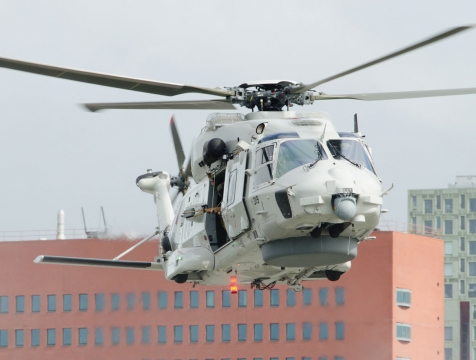
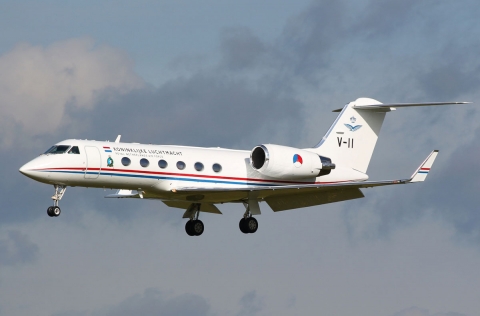
Photos: Ron Frijlink and Stephan Lodewijks (all via Scramble Magazine)
Gulfstream
The sole KLu Gulfstream IV proved itself in recent decades as a means of transport with which the political and administrative leadership of Defence and other ministries. The VIP-jet is getting outdated, is limited in its operations. It has less flight range, is often too small to carry the number of required passengers and it lacks a self-protection system, so risk areas are often difficult to visit. The MoD decided to replace the Gulfstream IV, which is assigned to 334sq at Eindhoven air base, with a second-hand Gulfstream 650 that will be modified to the required standards.
Multi-Role Tanker Transport
The European Defence Agency (EDA) is a joint agency that acquired air-to-air refueling and transport capacity. Nine members of the EDA purchased aircraft and flight hours and are participating in the programme, with the Netherlands as lead nation. Eight A330 MRTTs are purchased with first deliveries from June 2020 onwards.
Hercules
The current tactical air transport fleet of the KLu consists out of four C-130H(-30) Hercules transporters. The aircraft were purchased by the KLu in 1992 (two new C-130H-30s) respectively in 2005 (two second-hand C-130H). The oldest of these four aircraft was produced in 1978, so the technical and operational life of thirty years has expired. The readiness of the C-130 is currently too low due to the age of the whole fleet. The early replacement of the C-130 is therefore necessary to replace and restore the capacity of tactical air transport and, through making use of operational and technical developments, future-proof. The aim is to provide for the purchase of new aircraft to replace the current fleet. As Scramble Magazine reported earlier *), unconfirmed reports mention the purchase of five C-130Js.
*) New C-130J Hercules aircraft for Koninklijke Luchtmacht
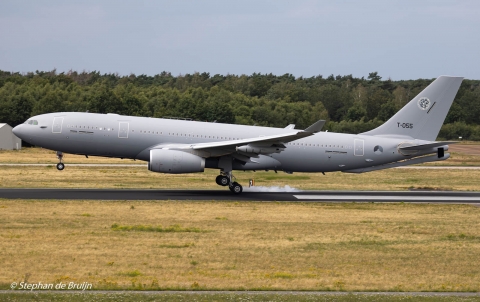
Photos: Stephan de Bruijn and Hans van Herk (all via Scramble Magazine)


